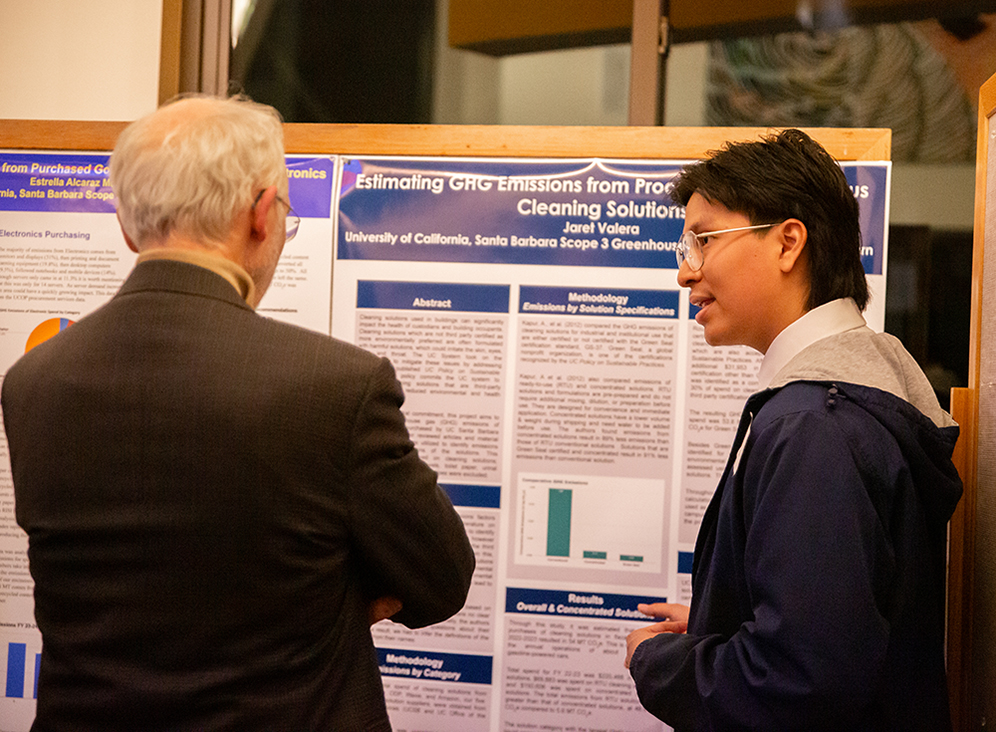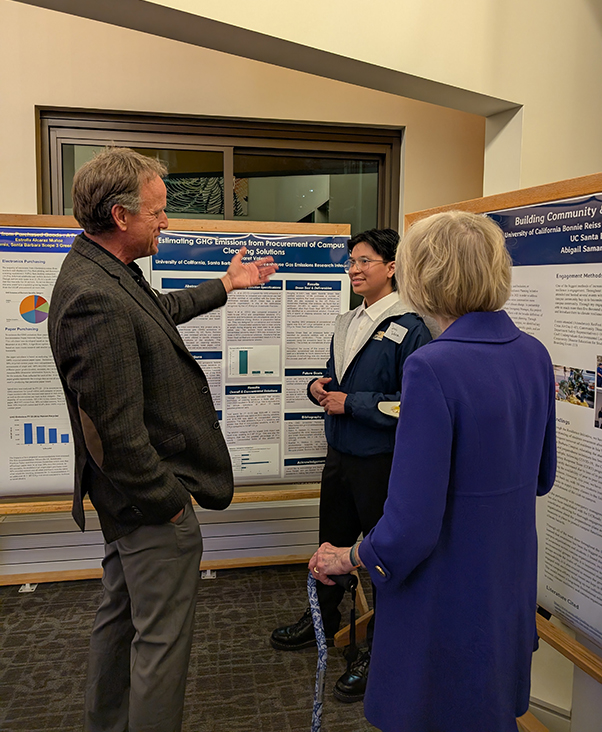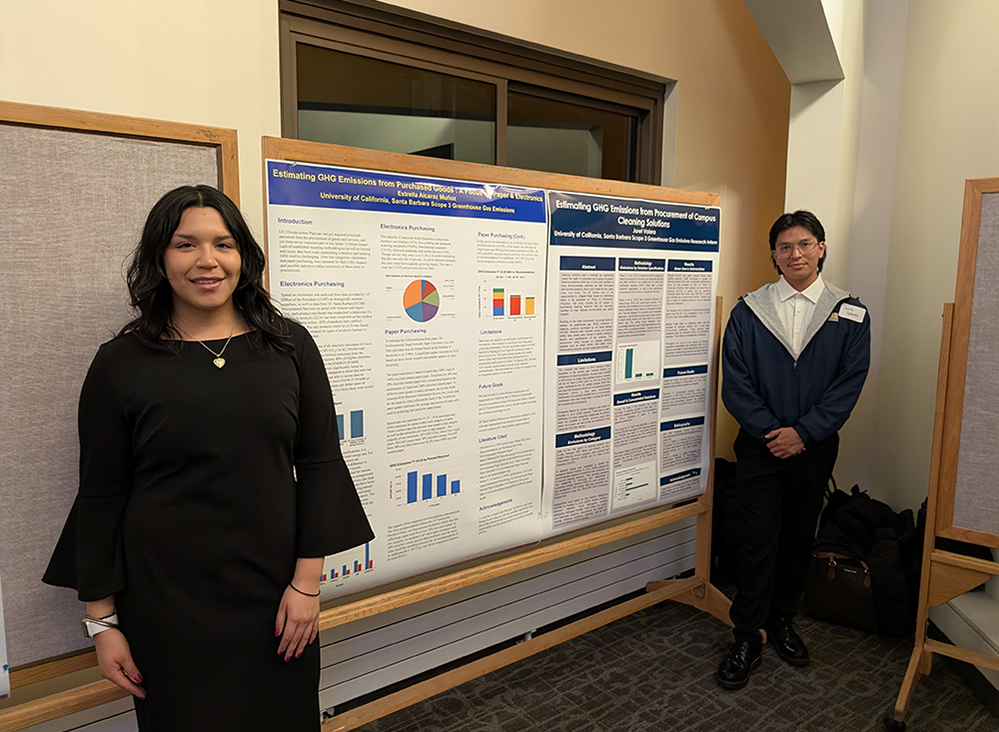Goals
The goal of this project was to estimate greenhouse gas emissions from cleaning solutions purchased by UC Santa Barbara using peer-reviewed articles and material safety data sheets to identify emissions factors and offer specific recommendations.
Deliverables
Outcomes/Metrics
- Developed a methodology for assessing GHG emissions of cleaning chemical purchases for UCSB.
- Assessed two years of data as a pilot.
- Developed template spreadsheets that can be used to assess future years’ data.
- Drafted a section of the 2025 UCSB Draft Climate Action Plan
In assessing specific data sets, Jaret also found that the total spent on cleaning solutions in the 2022-23 fiscal year was $220,488 ($69,833 in ready-to-use [RTU] cleaning solutions and $150,606 spent on concentrated cleaning solutions). It was estimated that UCSB’s purchases of cleaning solutions in the fiscal year of 2022-2023 resulted in 54 MT CO2e, equivalent to the use of about 12 gasoline-powered vehicles. Liquid soap was the category with the greatest GHG impact, emitting 30.5 MT CO2e. It was also the category with the most purchases of RTU products, despite concentrated alternatives being available. It is recommended that UCSB reduce its carbon footprint from cleaning solutions by utilizing more Green Seal certified solutions when possible and shifting away from the use of concentrated ones, which could reduce emissions to 11 MT CO2e (a 43 MT CO2e. drop).
About
This project entailed estimating greenhouse gases from the procurement of goods and services of cleaning products purchased by the university, which fall under Scope 3 Emissions. The need for the project was identified by the UCSB Climate Action Plan Manager, Jewel Persad. The UC Systemwide Sustainability Steering Committee and Global Climate Leadership Council were beginning to explore the possibility of including emissions from procured goods and services in future UC climate action plans.
Early climate action plans only focused on Scope 1 and 2 emissions, as they are major contributors to greenhouse gas emissions. Minimal baseline data existed to estimate how many emissions were related to Scope 3 emissions from purchased goods and services. Whatever data existed used broad, non-specific language when discussing Scope 3 emissions. Jaret’s project worked to advance this portion of climate action planning and better quantify where we stand on procured goods and services, setting up a baseline and methodologies for future years.
Jaret completed a literature review, identified GHG emissions factors from peer reviewed literature, developed a methodology for assessing emissions from the procurement of chemicals, and analyzed two years of purchasing data. He wrote up his findings in the UCSB Climate Action Plan and presented a poster on his work. A full description of Jaret’s method is described in the appendices of the 2025 Draft Climate Action Plan.
Project Leads
- Jaret Valera
Partners
- Jewel Persad, Office of the Vice Chancellor of Administrative Services
- Jen Bowser, Chancellor's Campus Sustainability Committee
- Katie Maynard, Sustainability Internships and Community Resources Department
- Estrella Alcaraz Munoz, Sustinability Internships and Community Resources Department
Funders
- Was originally funded by the Learning Aligned Employment Program (LAEP)
- Continued to be funded through the Sustainability Internships and Community Resources Department (SICR) with support from Work Study
Ways to Get Involved
- UCSB is currently seeking feedback on the Draft Climate Action Plan. Please check it out and offer your feedback here!
- In the future, UCSB Sustainability would be interested in continuing to refine how we report and set metrics on GHG emissions related to the procurement of goods and services.
Related Projects & More Info
Estimating GHG Emissions from Procurement of Paper & Electronics (Jaret's work was one part of a larger effort to research and develop metrics to assess Scope 3 emissions.)



